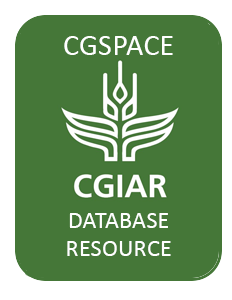Fertilizer subsidies in Malawi: From past to present
Malawi has been at the center of the debate on agricultural input subsidies in Africa ever since it significantly expanded its fertilizer subsidy program about two decades ago.
ISDC Feedback on Emerging Portfolio25 Draft
The Independent Science for Development Council (ISDC) reviewed the “Draft Portfolio25 Document: A set of proposals on the CGIAR 2025-27 Research and Innovation.†Our review is organized by comments on the overall portfolio, followed by specific feedback for the three Action Areas. This document provides brief and high-level reflections for consideration in future portfolio development.
Advanced course for Asia & North Africa on conservation agriculture: Gateway for sustainable agrifood systems
The Conservation Agriculture (CA) practices with increased acceptance across the globe are being considered as harbinger for sustainable intensification of smallholder production systems. Its positive impact on natural resources, and resilience to climate change effects are widely acknowledged.
Global methane pledge in Tajikistan: Assessment report
The Government of Tajikistan should consider joining the Global Methane Commitment as a strategic and prudent decision. Tajikistan's participation in the Global Methane Pledge offers numerous benefits that can positively impact the country's economy, environment, and global reputation.
Closing gender gaps through gender-responsive, demand-led breeding in Burundi
Gender inequality persists in Burundi’s agricultural sector, especially in the bean value chain dominated by women. Women often have less access to improved seeds and to productive technologies. Interventions dubbed “gender-responsive plant breeding†have been launched to develop new varieties to address the gender gaps in variety adoption.
Pakistan: Strategy to promote climate smart agriculture practices
Pakistan is a case of double injustice contributing a minuscule share of global greenhouse gases, yet it is bearing the brunt of global climate change impacts. It ranks among the top 10 countries vulnerable to climate change (Eckstein et al., 2021). The 2022 IPCC Report underlines the heightened vulnerabilities because of global warming and climate change leading to more floods.
Development of methods for improving flowering and seed set of diverse germplasm in cassava breeding
Cassava breeding faces obstacles due to late flowering and poor flower and seed set. The acceleration of breeding processes and the reduction in each cycle’s duration hinge upon efficiently conducting crosses to yield ample progeny for subsequent cycles.
Group-based and citizen science on-farm variety selection approaches for bean growers in Central America
Participatory approaches for crop variety testing can help breeding teams to incorporate traditional knowledge and consider site-specific sociocultural complexities. However, traditional participatory approaches have drawbacks and are seldom streamlined or scaled. Decentralized on-farm testing supported by citizen science addresses some of these challenges.
Double-booked: Effects of overlap between school and farming calendars on education and child labor
Across sub-Saharan Africa, countries with a greater percentage of overlapping days in their school and farming calendars also have lower primary school survival rates. In theory, greater overlap between the school and farming calendars should indeed reduce schooling investments, and farm-based child labor too, as it constrains the time allocation opportunity set for both productive activities.
Opportunities for innovation and intervention in Uganda’s dairy value chain: A scoping report
This report is generated as part of a scoping study to identify possible areas that should be prioritized for intervention to improve performance and sustainability of the dairy industry in Uganda. The evaluation relies on primary and secondary data collected by IFPRI and DDA in 2021.
Extreme weather and undernutrition: A critical but constructive review of the literature
Climate change is resulting in increased frequency of extreme weather events, especially in low- and middle-income countries (LMICs) already characterized by highly vulnerable malnourished populations.

